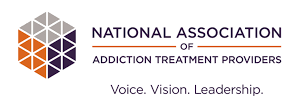Panic attacks are sudden episodes of severe fear that can make a person feel like they are having a heart attack or dying. Learn what panic attacks feel like and how to prevent them.
Panic attacksare sudden episodes of severe and debilitating fear that can occur at any time without a clear cause. But, what does it feel like to have a panic attack? Physically, a panic attack may make a person feel like they are having a heart attack. They may not be able to breathe properly and find it difficult to move. Some people may even think they are dying, even though there is no real threat to their physical health. Panic attack sufferers often report feeling like they are in physical danger or losing mental control.
Panic Attack Symptoms
The signs of a panic attack include bothphysical and emotional symptoms. Panic attacks begin suddenly and symptoms typically peak within a few minutes. People concerned with experiencing a panic attack may wonder, “What are the symptoms of a panic attack, and how can you tell if you’re having one?”
Panic attack physical symptoms include:
- Chest pain
- Rapid heartbeat
- Dizziness
- Shortness of breath
- Sweating
- Trembling
- Chills
- Nausea
- Hot flashes
- Numbness
Panic attack emotional symptoms include:
New Year, New Beginnings.
Whether you are struggling with addiction, mental health or both, our expert team is here to guide you every step of the way. Don’t wait— reach out today to take the first step toward taking control of your life.
- Fear of dying
- Fear of losing control
- Fear of physical danger
How to Tell the Difference Between a Panic Attack and Heart Attack
Panic attacks and heart attacks share several symptoms, including chest pain and a racing heartbeat. The severe stress andanxietythat can cause panic attacks can also lead to heart attacks. Although the two conditions can appear to be similar, there are several significantdifferencesbetween panic attacks and heart attacks.
The primary symptoms of panic attacks include:
- Rapid heart rate
- Sharp chest pain that lasts under 10 seconds
- Pain limited to one area of the body
- Pain that occurs while resting or while feeling anxious
- Pain that gets better or worse when changing positions
The most common signs of heart attacks include:
- Shortness of breath
- Chest pain that intensifies over a few minutes
- Pain that moves from the chest to other areas of the body
- Pain that is triggered by physical exertion
- Constant chest pain or pressure
If a person is uncertain about their symptoms, they should seek medical help right away. If a heart attack is suspected, call 911 for immediate attention.
Panic Attack Triggers
People who have experienced a panic attack before may wonder what causes or what triggers panic attacks. There are several panic attack triggers, including:
- Phobias, such as the fear of social situations, public speaking or enclosed spaces
- Underlyingmental healthconditions, such aspost-traumatic stress disorder
- Stressbrought on by significant life events, such as graduating from college, the death of a loved one, divorce or job loss
- Panic disorder, a type of anxiety disorder characterized by ongoing concern or worry about future panic attacks
- The anticipation of future fearful situations or future panic attacks
- Genetic predisposition
- Use ofstimulants, such as caffeine oramphetamines
- Medical conditions such as heart problems, overactive thyroid function, and low blood sugar
- Medicationwithdrawal
How to Tell if Someone Is Having a Panic Attack
People who have never experienced a panic attack may wonder how to recognize a panic attack in a loved one or coworker. When someone appears to be having a panic attack, a medical emergency such as a heart attack should be ruled out first. A person experiencing a panic attack may be breathing quickly and shallowly and sweating and trembling. The person may report feeling lightheaded, nauseous or unable to breathe. If they have experienced a panic attack before, they may be able to say so.
Whileassisting a person experiencing a panic attack, remain calm and talk to them in brief, simple sentences. If possible, try to help them slow their breathing by asking them to match a slow breathing rate. Remove them from any potential triggering situations, such as a large group or enclosed space, and bring them to a quiet, calm location. Remain with them until the panic attack ends. Encourage the person to seek help from a medical professional for their panic attacks.
How to Prevent Panic Attacks
There are several techniques to prevent or cope with panic attacks, and each person may need to utilize different strategies. Prevention strategies include:
- Avoiding triggering situations
- Practicing slow, controlled breathing
- Meditating to decrease stress and focus on the present
- Focusing on objects or stimuli in the environment, such as sounds or sights
- Distracting oneself by counting backward or squeezing a stress ball when a panic attack is imminent
- Exercising regularlyto decrease stress and anxiety
- Using medications to treat panic attacks, such asbenzodiazepines, beta-blockers,selective serotonin reuptake inhibitors(SSRIs) orserotonin-norepinephrine reuptake inhibitors(SNRIs)
- Undergoingcognitive behavioral therapy, a form of treatment that emphasizes thinking about the emotions behind different thoughts and behaviors








